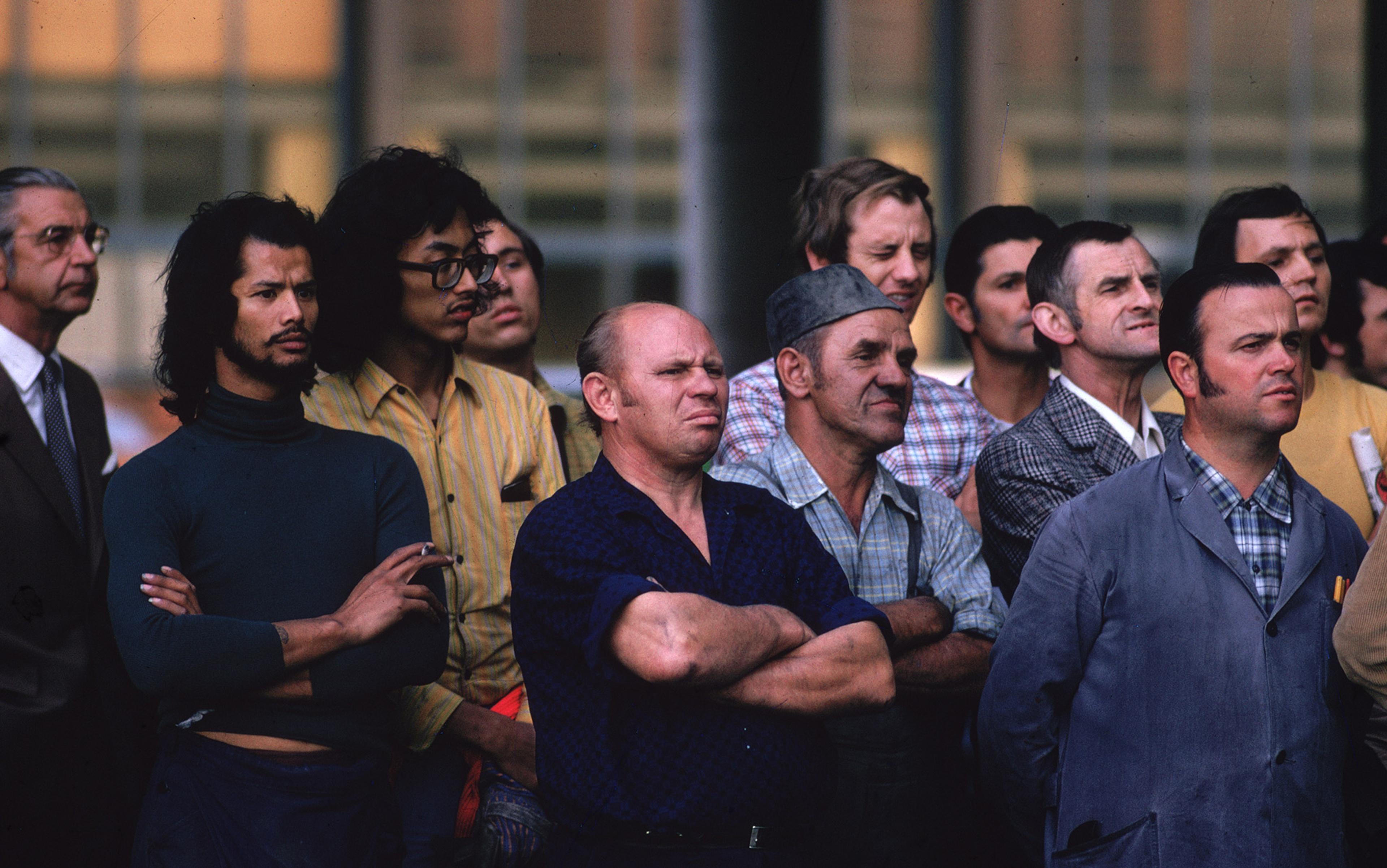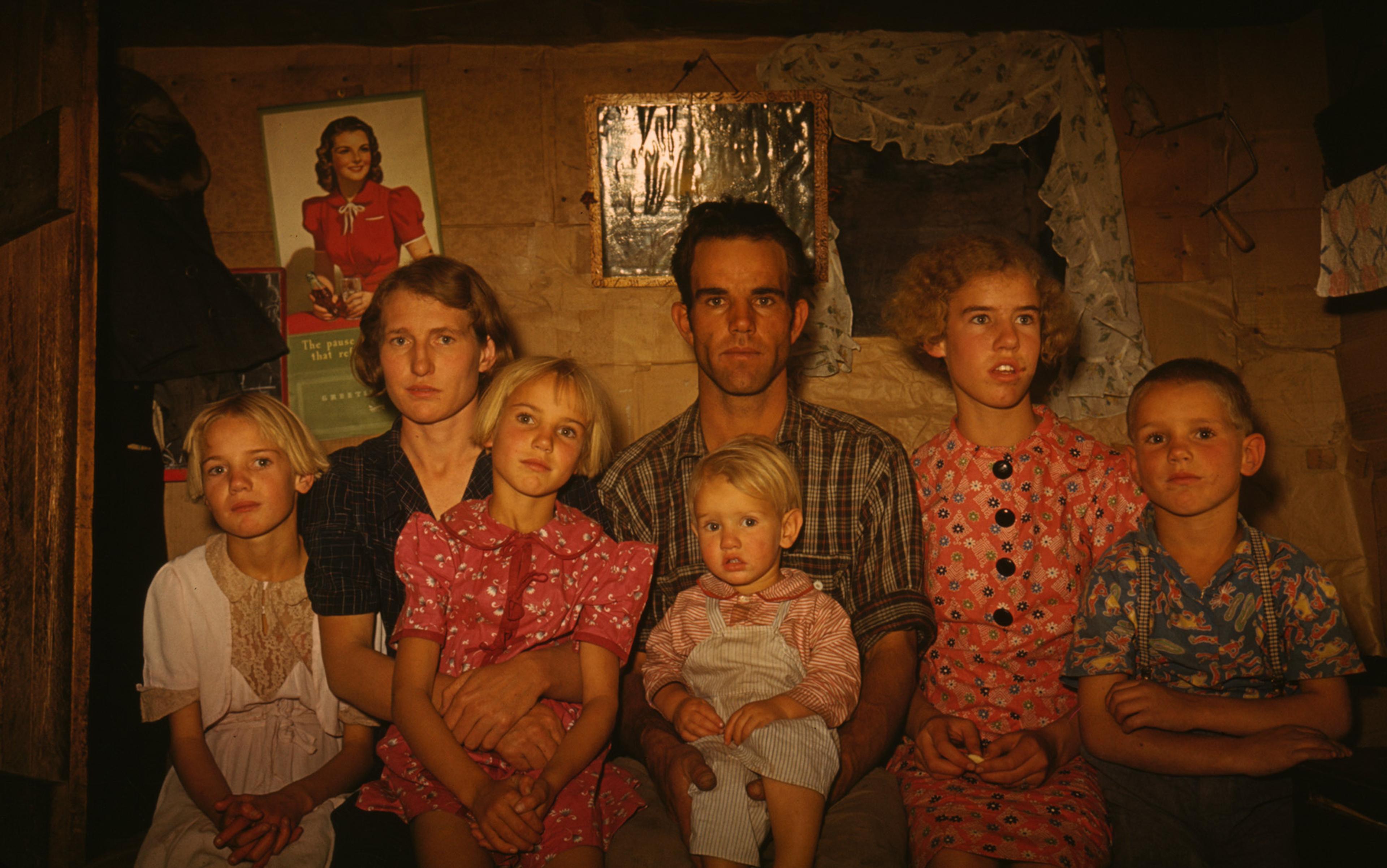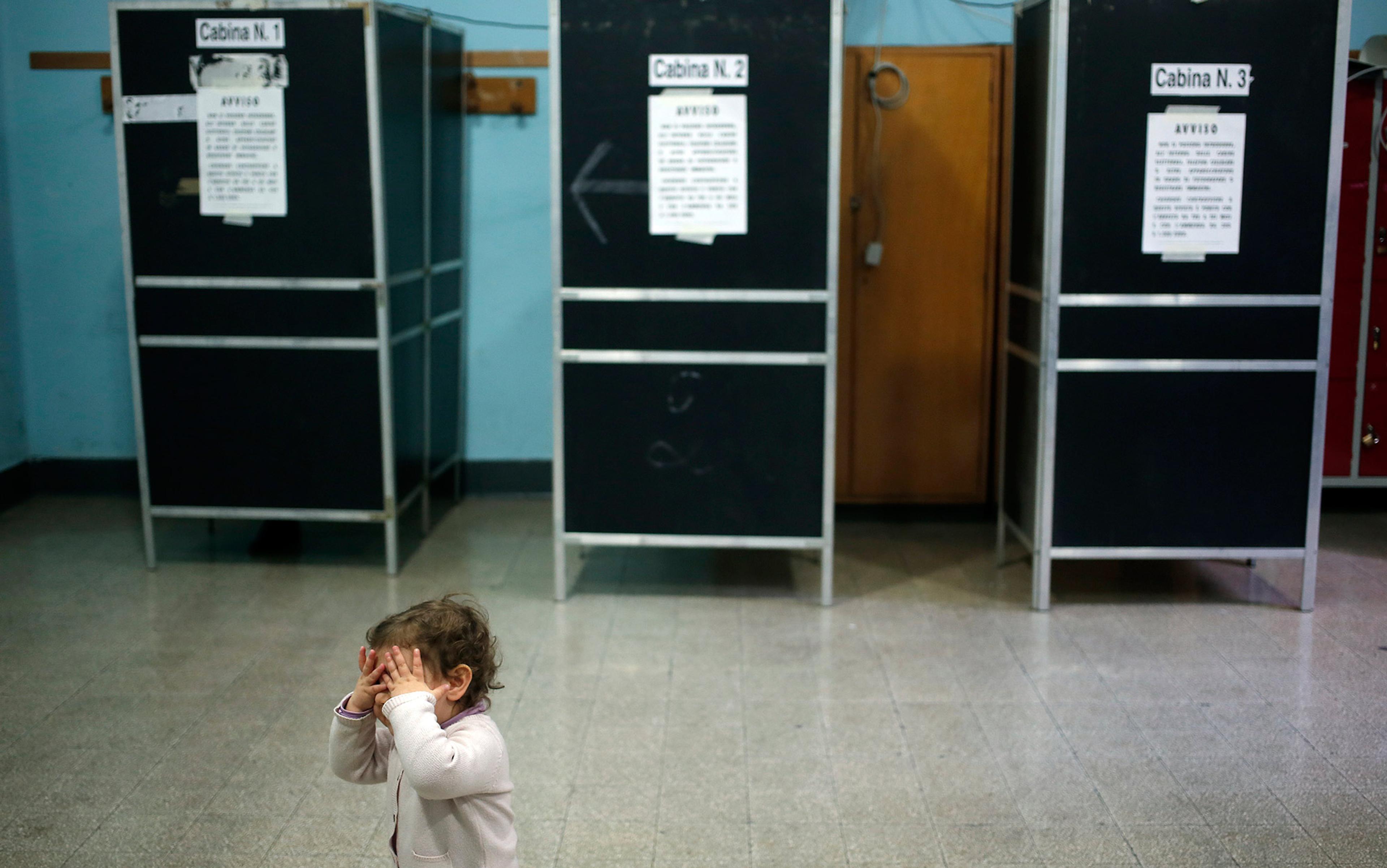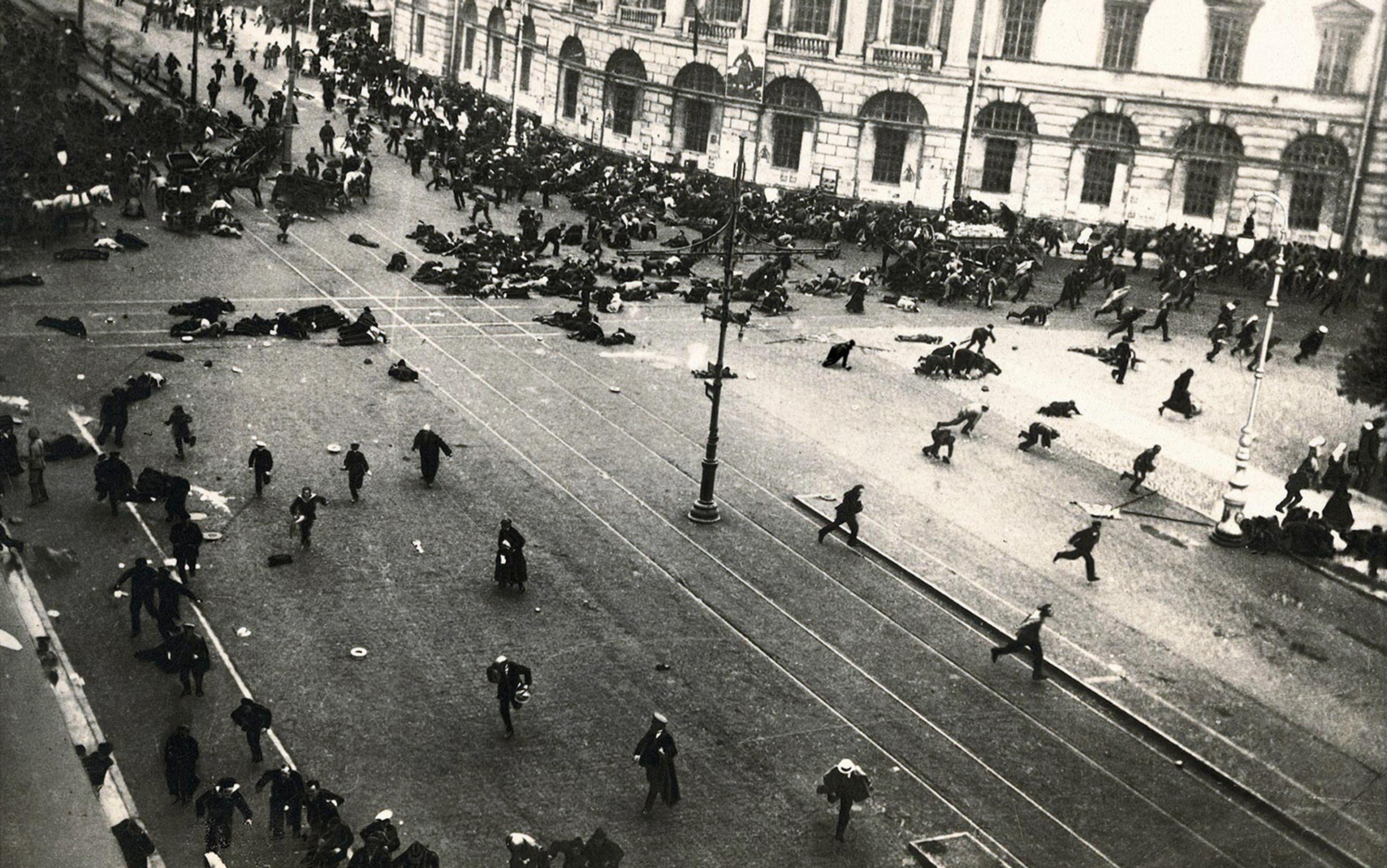With the end of the Second World War, the economies of western Europe and North America began a period of spectacular growth. Between 1950 and 1973 GDP doubled or more. This prosperity was broadly shared, with consistent growth in living standards for rich and poor alike and the emergence of a broad middle class. The French call it les trente glorieuses – the 30 glorious years – while the Italians describe it as il miracolo economico. The story of how this golden age of shared economic growth came to be has almost been forgotten, despite it being less than a century ago. There has never been a more urgent time to remind ourselves.
How did western countries, in one quarter of the 20th century, manage to increase both equality and economic efficiency? Why did this virtuous combination ultimately fall apart by the end of the century? The answer lies in the awkward relationship between democracy and capitalism, the former founded on equal political rights, the latter tending to accentuate differences between citizens based on talent, luck or inherited advantage. Democracy has the potential to curb capitalism’s inherent tendency to generate inequality. This very inequality can undermine the ability of democratic institutions to ensure that the economy works for the majority.
The rise and fall of democratic capitalism in the postwar era is one of the most important events in modern history.
The Second World War cut capitalism down to size. Total war meant that nations couldn’t afford to allow normal patterns of private investment for profit to drive the economy. Instead, governments retooled capitalism to serve the purpose of military victory in ways that placed a greater burden on the haves, by taxing and even expropriating their wealth, while relieving the pressure on the have-nots. In the aftermath of the conflict, popular pressure and international threats established a more equitable distribution of resources. These changes ‘democratised’ capitalism: the market economy was regulated and attenuated in a variety of ways to meet the broader needs of society, rather than the narrow requirements of the investor class.
Not only did income gaps close, but wealth also became more widely held. In the United Kingdom, home ownership increased from just a third of the population in 1939 to more than half by 1971; in the United States, it grew from under half to more than two-thirds in same period. Luxuries such as private cars, televisions and regular holidays became widely available. For this to happen involved a major role for the government in shaping the productive system, reallocating capital and redistributing income.
The two world wars, with the Great Depression in between, fundamentally altered social power relations in the most advanced economies of North America and western Europe. The practical demands of war required an assertion of political control over the economy. The ‘invisible hand’ of the market was fine for peacetime, but the drastic and urgent reallocation of productive effort towards military uses could be achieved only through a command-and-control structure. Moreover, normal patterns of trade had broken down. This meant that markets couldn’t deliver key supplies of energy, food and raw materials: government would have to control prices and determine how to distribute basic goods. Government also reallocated a large share of the labour supply to military service through conscription. In some cases, mass consumption was restricted to essentials such as food and heating (often rationed) to free up resources for the war effort. The state took over a much larger share of spending in the economy, raising taxes and borrowing to pay for it.
In 1943, Canada raised its top income tax rate to 95 per cent; in 1944, the US taxed the richest at 94 per cent
Public spending was largely directed towards bellicose uses, but wartime social provision also expanded. In Britain, for example, the Beveridge report of 1942, at the height of the war, outlined a comprehensive welfare state that could banish ‘Want, Disease, Ignorance, Squalor and Idleness’, while pensions, unemployment assistance and support for child nutrition all grew in budget allocations. In the aftermath of the war, the decline in military spending was in part offset by growth in spending on welfare provision. The creation of the National Health Service in 1948 delivered free point-of-service healthcare financed by general taxation, and extensions of worker benefits and family allowances. The election of a Labour government in 1945 with a comfortable parliamentary majority made this expansion of social provision possible, capitalising on the returning war veterans’ reluctance to suffer a repeat of the hardships of the 1920s and ’30s.
Before the war, Britain had lagged in social reform, unlike countries as varied as Sweden, Belgium and the US. All of these nations had acted decisively during the Depression era to address mass unemployment through major programmes of job creation and extensions of social safety nets. By 1950, western Europe, North America and Japan had all established, with varying degrees of generosity, the basic foundations of the modern welfare state: public pensions, sickness and unemployment benefits and family allowances. Taxes on the wealthy were raised to pay for it all, leading to marginal tax rates on top incomes that today appear unimaginable: in 1943, Canada raised its top income tax rate to 95 per cent; in 1944, the US began to tax its richest citizens at 94 per cent. Taxes on capital were also hiked across the democracies: inheritance taxes reached average rates of more than 40 per cent in the 20 most advanced economies, while in the aftermath of the war some countries levied one-off taxes on the largest estates, which in France reached a confiscatory 100 per cent for those who had profited most from the conflict.
Perhaps the most extraordinary transformation took place in Japan. The rebuilding of the Japanese economy after the war, under the direct control of the occupying US forces, involved a dramatic redistribution of wealth and influence away from ruling elites, in particular landowners and the bureaucratic and military elites responsible for Japanese expansionism. The US occupiers, under the unlikely direction of General Douglas MacArthur, levied eye-watering taxes such as 70 per cent on the largest fortunes, and expropriated absentee landlords. The biggest family-owned industrial conglomerates were dismantled and senior management fired. Meanwhile, the war more or less wiped out wealth held in stocks and corporate shares. Labour reforms boosted union membership leading to higher wages and enhanced job security. The purpose behind these reforms was clear: to uproot the concentration of wealth and power around a reactionary elite that had provoked Japanese aggression.
The Second World War gave a decisive push to establish a new form of economic system in which political demands took primacy. But across the capitalist world, pressure to bring capital to heel had been brewing throughout the first half of the 20th century. The labour movement, in the form of trade unions in the workplaces and socialist or social democratic parties in the political arena, was growing in strength, and demanding social and economic reforms. In most of western Europe, they forced the expansion of voting rights beyond the property-owning classes, and once entrenched in the institutions of the state pushed for a more equitable economic system, in which the fruits of progress would be more widely shared. The Depression and war intensified these demands, and the postwar era established a new form of ‘managed’ or ‘democratic’ capitalism that delivered a more equal distribution of income and wealth.
Democratic capitalism redressed the balance between the brutal inequalities of early industrial capitalism and the need for social consent to secure political stability. It rested on three broad pillars: a redistributive welfare state that provided economic security while narrowing income gaps between rich and poor, corporatist dialogue between employers and the labour force, and highly regulated capital markets. Aspects of this form of capitalism sometimes existed in nondemocratic societies too. But as a basic set of socioeconomic institutions it was most associated with the democratic form of government in which competitive elections and representative political parties incorporated citizen demands into policymaking.
Democracy, by distributing voting power independently of economic status, is by definition a force for greater equality, and a threat to the entrenched advantages of wealthy elites. In 19th-century England, even liberal reformers such as John Stuart Mill, for example, opposed the expansion of voting rights beyond the property-owning classes, for fear that the poor would use that power to expropriate the rich. The labour parties that sprang up across Europe near the end of the 19th century demanded universal suffrage as a precondition of the socialist transformation that they hoped to enact by taking over the state. And the dramatic growth in the size of the government sector during the 20th century, as democracy became entrenched throughout the capitalist world, confirms that the spread of voting rights brought with it a greater role for government in redistributing income by taxing, spending and regulating economic activity.
This close historical association between democracy and redistribution was theorised by the economists Allan Meltzer and Scott Richard as a neat formula that predicted a neverending accumulation of economic power by the government. Given some simple assumptions, the typical voter in the middle of the income distribution is a net beneficiary of increased government spending, because higher earners will pay the bulk of taxes, while politicians seeking re-election have an incentive to spread government money around to maximise their popularity. The result is that, over time, democracies tended to tax more and more, committing government to spending on a range of popular public services and income transfers. At the end of the 19th century, at the onset of democratisation, government spending in the Western world averaged around a 10th of national income. By the end of the 20th century, it accounted for around 45 per cent.
Democratic capitalism wasn’t a government takeover of the market economy, but it rested on a class compromise
The increased role for government in distributing the fruits of economic growth meant that inequality and poverty fell to unprecedented levels. Taxes became far more progressive. In the 1950s, top marginal rates of income tax exceeded 90 per cent in Italy, the UK and the US. Unemployment benefits, pensions and family allowances expanded to provide secure incomes to households all across the income distribution. By taxing the rich and transferring money to the poor and middle-income groups, welfare states substantially reduced material hardship and ensured economic gains reached the least fortunate. The government also became a major employer, offering well-paid jobs with good working conditions and pension rights in the public administration and services such as the police, healthcare and education. All these measures meant that growth in living standards was spread across income groups.
Trade unions in the workplace played a vital role in democratic capitalism. This was particularly true in continental Europe, where the prewar tradition of corporatism, originally associated with authoritarianism and fascism, was retooled for the purposes of securing labour peace. In Sweden, wage rates were set by collective bargaining at the national level, in which unions, employers and government negotiated how to optimise employment, investment and labour compensation. The so-called Rehn-Meidner model, developed in the 1950s by two Swedish trade union economists, sought to achieve a virtuous circle of higher wages for lower-skilled workers, increased investment and productivity growth, by forcing inefficient employers who relied on cheap labour to the wall. Sweden seemed to have upended the trade-off between economic efficiency and inequality, to the benefit of both workers and investors.
During the postwar boom years of 1950-73, West Germany and the small, open economies of northern Europe boasted such corporatist arrangements. At its peak in the 1970s, union membership in Scandinavia reached around 80 per cent of the workforce, and though numbers were lower elsewhere, many countries (including Germany and France) also legislated for elected works councils to facilitate employer-employee dialogue and cooperation. Although corporatist bargaining was often conflictual, especially in countries with fragmented trade union movements such as the UK and Italy, it succeeded in levelling up wages, ensuring that growing living standards spread throughout the workforce. Employers also benefited from having unions to negotiate terms with, as it allowed them greater control over wage costs and more leeway to invest in worker skills, by agreeing set rates with rival firms and averting damaging practices such as the poaching of skilled employees.
The final pillar of postwar democratic capitalism consisted of a range of institutions to restrain capital mobility across borders: the so-called Bretton Woods system. Fixed exchange rates anchored to the US dollar provided stable trading conditions and defended weak currencies from speculation. Capital controls forced investors to focus on domestic opportunities, freeing governments to stimulate demand during downturns, letting inflation rise to maximise growth. John Maynard Keynes’s vision of demand management to avert unnecessary unemployment became reality, at least for the 25 years after the war.
For the most part, direct state ownership of industries was a marginal feature of democratic capitalism. Some countries, such as the UK, France and Italy, did roll out extensive programmes of nationalisation of strategically sensitive sectors such as coal and steel, as well as networked industries such as energy and transport, but most did not. Although governments did get involved in the banking sector in some countries, financial services remained in private hands. Democratic capitalism wasn’t a government takeover of the market economy. It did however rest on a class compromise in which cooperative relations between capital and labour generated shared benefits. In the early 1970s, this compromise began to break down.
In the 1970s, a combination of high inflation, faltering growth and industrial disputes over wages ushered in an era of social and political turbulence. The experience brought a revival of liberal market ideology. The defection of the US from the Bretton Woods arrangements in 1971, and the oil price hikes by the Organisation of the Petroleum Exporting Countries cartel in 1973 and 1979, dramatically changed the nature of corporatist bargaining, which now became more a mechanism for distributing losses rather than for sharing out gains. In some countries, notably Germany, unions accepted wage restraint, effectively sacrificing workers’ real incomes to protect profits and therefore investment. In others, such as the UK and Italy in particular, unions were unable to cut such a deal, inflation rose and profits were squeezed. Unemployment rose and growth fell, while governments that had to borrow ran into fiscal constraints and began to run large budget deficits. In the UK, the Labour government’s request for a loan from the International Monetary Fund in 1976, and a wave of strikes in 1979 that became known as the ‘Winter of Discontent’, seemed to symbolise the definitive failure of the postwar economic model. Demands for change grew, from both Right and Left.
The problems of the 1970s, and the failure to resolve them using the typical policy tools of postwar democratic capitalism, opened up a window of opportunity for a rising generation of economists critical of the Keynesian thinking that underpinned the postwar model. Centred around the University of Chicago, economists including Robert Lucas and Milton Friedman took aim at the key planks of the postwar model: full employment macroeconomics, and redistribution through government spending.
The Chicago School questioned the logic of stimulating demand in recessions, arguing that it inevitably ratcheted up inflation without achieving higher growth. In an echo of the economics that dominated prior to Keynes, these neoliberal or neoclassical economists prioritised individual choices in the marketplace, which left to their own devices would return the economy to equilibrium. Government should keep out of the way.
Alongside the Chicagoans, the so-called Virginia School of economists such as James Buchanan stigmatised government in general as fundamentally inefficient and wasteful, arguing that the growth in the size of the public sector promoted idleness and corruption. These ‘public choice’ economists maintained that government employees, not being subject to market pressures, would quite rationally choose to either work as little as possible, or conversely work hard to expand the size of their bureaus for personal gain, exploiting hardworking taxpayers. Even among economists sympathetic to the aims of democratic capitalism doubts were emerging. In 1975, Arthur Okun, once an economic advisor to the Democratic president Lyndon B Johnson, popularised the notion of equality and efficiency as a ‘big trade-off’, arguing that greater equality came at considerable economic cost. By taxing productive activity and transferring resources to others, the government acted as a ‘leaky bucket’. Democracy was undermining capitalism.
At the same time, elements on the Left also undertook to bring down the postwar compromise. Parts of the labour movement responded to the oil shock by radicalising, going beyond securing rising wages to demand greater control over the management of industry and the allocation of capital. In Sweden, the trade union movement promoted the creation of wage-earner funds: collective investment funds financed by special payroll and profit taxes and run by the unions. These funds extended the principle of economic democracy into the realm of capital markets. More dramatically, in some countries, part of the radical Left splintered off into terrorism. The Baader-Meinhof group in Germany and the Red Brigades in Italy assassinated politicians, bankers and industrialists in the name of revolution, the latter even holding a former prime minister hostage for more than a month before killing him and dumping his body in a street close to his Party headquarters in Rome. Everywhere the tension rose between calls to bring down capitalism and the social democratic project of reconciling worker demands with corporate profits. For many on the Left, capitalism had become incompatible with democracy.
Popular political engagement, far from threatening democracy and capitalism, could be the means of saving it
This standoff between the logic of capitalism and the demands of democracy created alarm in elite circles. The Trilateral Commission, an international discussion group founded by the American banker David Rockefeller in 1973, produced a report called The Crisis of Democracy, which saw the high levels of popular mobilisation as an ‘excess’ of democracy, which couldn’t cope with a demanding electorate. But alongside this intellectual critique, increasing pressure on democratic governments from capital markets was pressing politicians to find ways of containing mass demands for higher living standards and government spending. They found support in this quest from the growing share of the population that had become prosperous enough to have capital assets of their own, from cash savings, to pension funds to houses. The restrictive nature of financial regulation in the postwar era presented a constraint on the wealthy, but also on the emerging middle classes, who were keen to enjoy greater freedoms to borrow and invest on their own account. Employers began to see the appeal of a less regulated form of capitalism, and the new middle class provided the electoral support for a much more market-oriented system. Democratic capitalism was in trouble, and its key backers in the labour movement and the working class were increasingly weakened by the division between pragmatists and radicals.
The promise of the neoliberal era to unleash the power of individual incentives to spread prosperity has not been fulfilled. Average growth rates across the advanced capitalist systems failed to match those of the postwar boom years. Since the 1970s, an increasingly unequal income distribution has meant that, for many, living standards failed to improve by much at all in subsequent decades. In the 1970s, strikes, demonstrations, riots and even terrorism expressed social tensions. By the 1990s, a resentful apathy, reflected in falling voter turnout and disengagement with formal party politics, signalled mass frustrations. The neoliberal revolution succeeded not only in shifting policy, but in fundamentally undermining the institutional preconditions of democratic capitalism. Governments progressively delegated important policy decisions to non-elected bodies, some of them supranational. Meanwhile, anti-union legislation and the declining bargaining power resulting from offshoring and heightened global competition took a heavy toll on worker rights.
Survey data tells us that voters in most countries are supportive of the institutions of democratic capitalism. People across the West share concerns about inequality, even in the individualistic political culture of the US. Popular support for public ownership of key industries remains strong. Yet the mainstream political establishment dismisses a return to government interventionism out of hand. So what would it take to re-establish a more inclusive economic system, capable of beating Okun’s ‘big trade-off’? The history of the postwar period suggests three key drivers of progressive change, at least two of which are present in some form.
First, intellectual support: the Keynesian revolution of the 1930s played a key role in legitimising government intervention in the economy, and in developing refined tools to stabilise the capitalist economy. Likewise today, influential economists such as Thomas Piketty, Joseph Stiglitz and even Larry Summers are pushing for the kinds of reforms that would restore the balance between labour and capital and promote greater equality as a route to growth, rather than a hindrance to it.
Second, political organisation. The rise of Right-wing populism, in the guise of Donald Trump in the US, Brexit in the UK and various xenophobic parties in continental Europe, has overshadowed the extraordinary mobilisation of progressive forces in many of the same countries. The Bernie Sanders presidential campaign in the US and Jeremy Corbyn’s leadership of the Labour Party in the UK might have failed to win office, but they have shifted the debate decisively to the Left. In Europe, new-Left parties such as Podemos in Spain have mobilised millions of voters around radical reforms such as a basic income, which was introduced in Spain in June 2020. This re-emergence of popular political engagement, far from threatening democracy and capitalism, could prove the most effective means of saving it. Populisms of both Left and Right challenge the exclusion of citizens from the key decisions about how the economy is organised. Politicians of all stripes are increasingly being pushed into recognising popular demands for more democratic control over capitalism, whether by restricting the global market for labour, or by insisting on a more equal distribution of income and wealth.
The third factor provides less room for optimism. War, and its catastrophic effects, appear to have been important in the triumph of democratic capitalism in the 20th century. The spectre of war with communist nuclear powers also served to concentrate the minds of democratic policymakers afraid of revolutionary forces at home. The historian Walter Scheidel has gone as far as to argue that deeply unequal societies can be transformed only by what he calls the ‘four horsemen of the apocalypse’: war, revolution, state collapse and pandemics. The COVID-19 pandemic has already wreaked havoc across the globe, but has fallen well short of the kinds of disruptive effects of previous pandemics that could provoke fundamental political and economic change. However, the broad acceptance of an increased role for government in managing the economy during the pandemic shows that the appetite for democratic capitalism remains.






